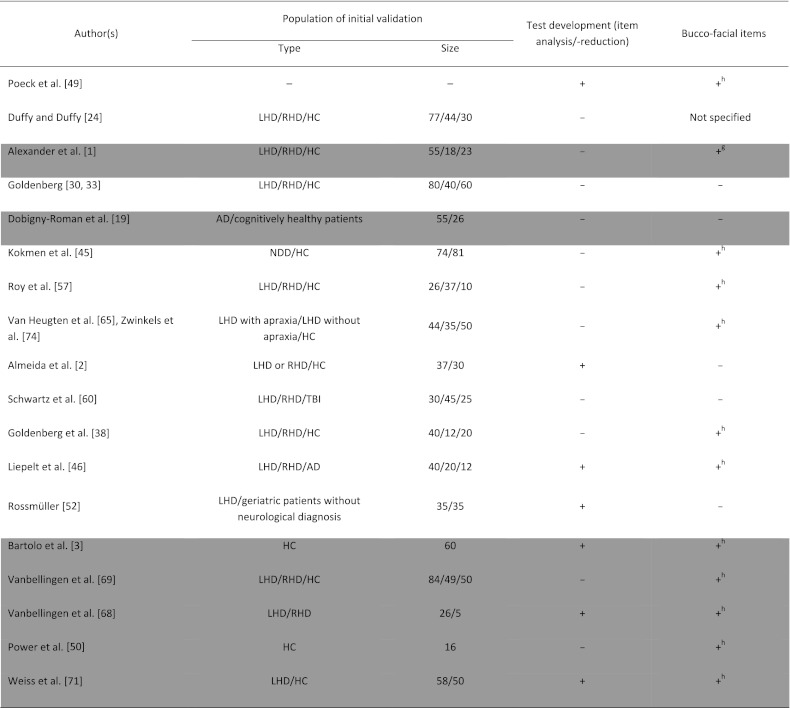Table 1.
Summary of the published assessments developed for diagnosing upper limb apraxia (until April 2011; note that tests are ordered by publication year)


Lines highlighted in dark grey indicate apraxia tests that are described in more detail in the text, as these tests fulfill our predefined selection criteria (i.e., provide cut-off scores and assess both the structural and the semantic processing route)
Examined patient populations according to the categorization by the authors: LHD left hemisphere damage, RHD right hemisphere damage, HC healthy controls, TBI traumatic brain injury, AD Alzheimer’s disease, NDD neurodegenerative diseases (e.g. Alzheimer’s disease, Parkinson’s disease, etc.)
aThe apraxia test by De Renzi et al. ([16], marked with light grey) does not comply with the above-described selection criteria, but is nevertheless discussed within the text because—in contrast to the assessments fulfilling the predefined selection criteria (marked with dark grey)—this test contains a subtest for the assessment of actual object use
bDe Renzi et al. [17] also examined pantomime of object use (on visual presentation of the objects). However, this subtest was not applied to all patients and controls and was not relevant for the determination of the cut-off scores indicating apraxic impairment
cIn the assessments by Schwartz et al. [60] and Goldenberg et al. [38], “language” and “objects” are not separately used to trigger the tested action, but are used concurrently
dSchwartz et al. [60] describe in detail how to administer and score single subtests, however, a clear cut-off score for an apraxic impairment is missing. Nevertheless, as the performance of different patient groups (patients with left- or right-hemisphere stroke, patients with traumatic brain injury), and the performance of a healthy control group is reported, it is possible to relate a given test score to the scores achieved by the different patient groups and controls
ePlease note that the apraxia screening (AST) by Vanbellingen et al. [68, 69] contains only one item to test for deficits of the structural processing route
fValidity of the AST was only assessed with respect to the TULIA (a more comprehensive apraxia test, based on which the AST was built by means of item reduction). Analysis of the validity with respect to an external criterion has not been assessed so far
gThe assessment contains a subtest for the acquisition of bucco-facial apraxia (including a separate cut-off value)
hThe assessment contains one or more bucco-facial items but not a separate cut-off for the diagnosis of bucco-facial apraxia
